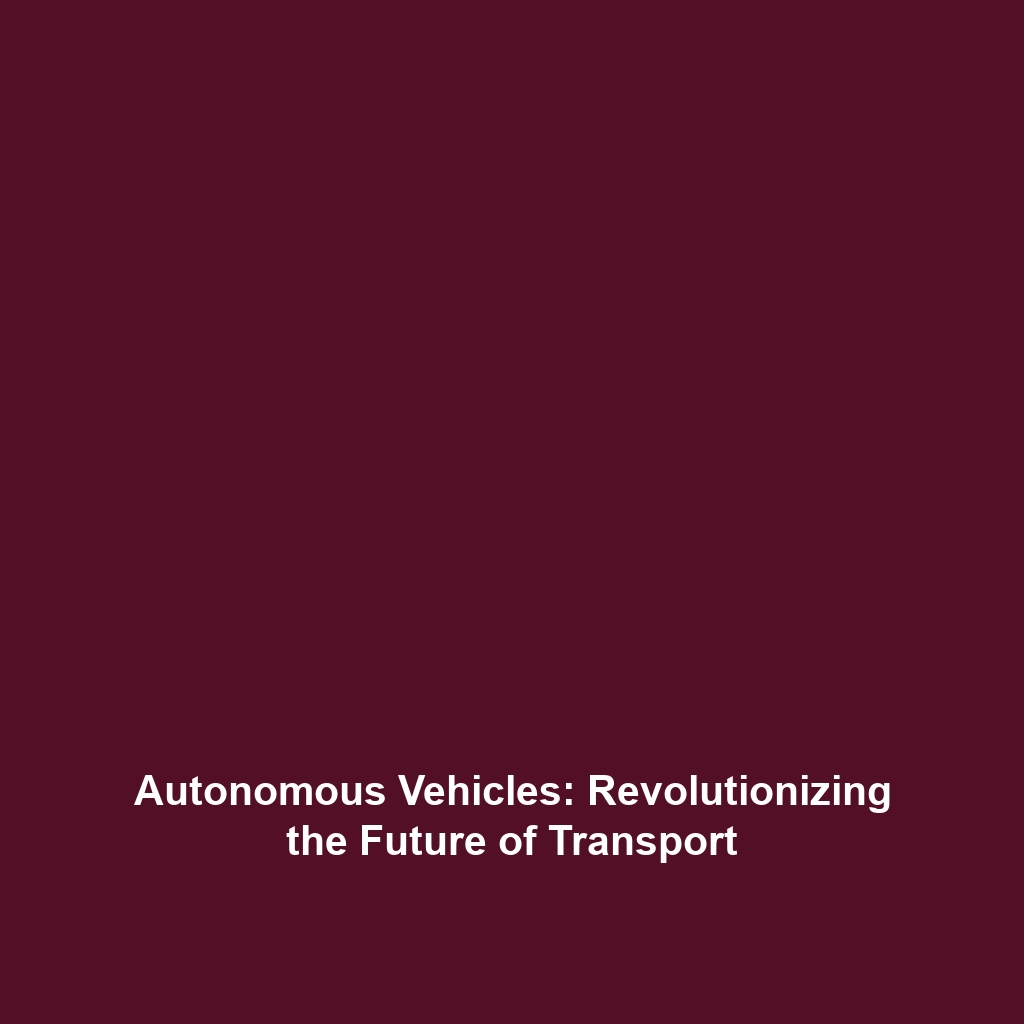Autonomous Vehicles: The Future of Driverless Transportation
Introduction
Autonomous vehicles represent one of the most groundbreaking advancements within the domain of autonomous robots. As technology evolves, the significance of driverless transportation grows, promising to transform the way we travel, mitigate traffic accidents, and reduce environmental impacts. Understanding autonomous vehicles is vital not only for technological enthusiasts but also for everyday commuters who stand to benefit from safer, more efficient travel options. This article delves into the integral concepts, real-world applications, and future directions of autonomous vehicles, setting the stage for a new era of driverless transportation.
Key Concepts
Autonomous vehicles operate using a combination of advanced technologies that enable them to navigate and make decisions without human intervention. The key concepts include:
- Artificial Intelligence (AI): AI algorithms process data collected from vehicle sensors to understand the environment, making real-time decisions.
- Machine Learning: This subfield of AI allows vehicles to learn from data patterns, improving their performance as they gain experience.
- Sensor Technologies: Autonomous vehicles are equipped with LIDAR, cameras, and radar systems to perceive their surroundings accurately.
- Connectivity: Vehicles communicate with each other and infrastructure to enhance safety and coordination.
These concepts illustrate how autonomous vehicles fit into the broader category of autonomous robots, which includes any robot capable of operating independently.
Applications and Real-World Uses
The applications of autonomous vehicles are diverse and rapidly expanding. Here are some noteworthy examples that underline their significance in the realm of autonomous robots:
- Ride-Sharing Services: Companies like Waymo and Tesla are piloting autonomous taxis, illustrating how driverless transportation can revolutionize urban mobility.
- Freight and Delivery: Autonomous trucks are being tested to streamline logistics, reducing shipping costs and delivery times.
- Public Transportation: Buses equipped with autonomous capabilities enhance public transport systems, optimizing routes and reducing congestion.
These real-world uses showcase how autonomous vehicles can transform traditional modes of transport, indicating a shift towards more efficient systems.
Current Challenges
Despite the promising outlook, there are several challenges that need to be addressed in the advancement of autonomous vehicles within the broader scope of autonomous robots:
- Safety Concerns: Ensuring the safety of passengers and pedestrians is paramount, requiring rigorous testing and regulatory approvals.
- Ethical Issues: Decisions made by autonomous systems in critical situations raise complex ethical dilemmas.
- Infrastructure Limitations: The existing road infrastructure may not support the full integration of autonomous vehicles, requiring significant upgrades.
- Public Acceptance: Gaining public trust in autonomous technology remains a challenge, necessitating comprehensive education and outreach.
Future Research and Innovations
The future of autonomous vehicles is ripe with innovations and research initiatives aimed at enhancing their functionality and integration. Notable breakthroughs include:
- Enhanced Sensor Technologies: Developing more sophisticated sensors that can operate in adverse weather conditions is a focus area.
- Improved AI Models: Researchers are working on refining algorithms to better interpret complex driving environments.
- Vehicle-to-Everything (V2X) Communication: This technology will enable vehicles to communicate with each other and their environment, improving safety and efficiency.
These innovations will significantly impact the future of autonomous robots, paving the way for smarter and more reliable driverless transportation.
Conclusion
In summary, autonomous vehicles represent the forefront of driverless transportation and hold immense potential within the framework of autonomous robots. While there are challenges to be navigated, the advancements and applications of these vehicles indicate a promising future. Stakeholders, including technology developers, lawmakers, and the public, must collaborate to ensure a seamless transition to this innovative mode of transportation. For further exploration of related topics, consider reading about technology infrastructure and ethical implications in AI development.



